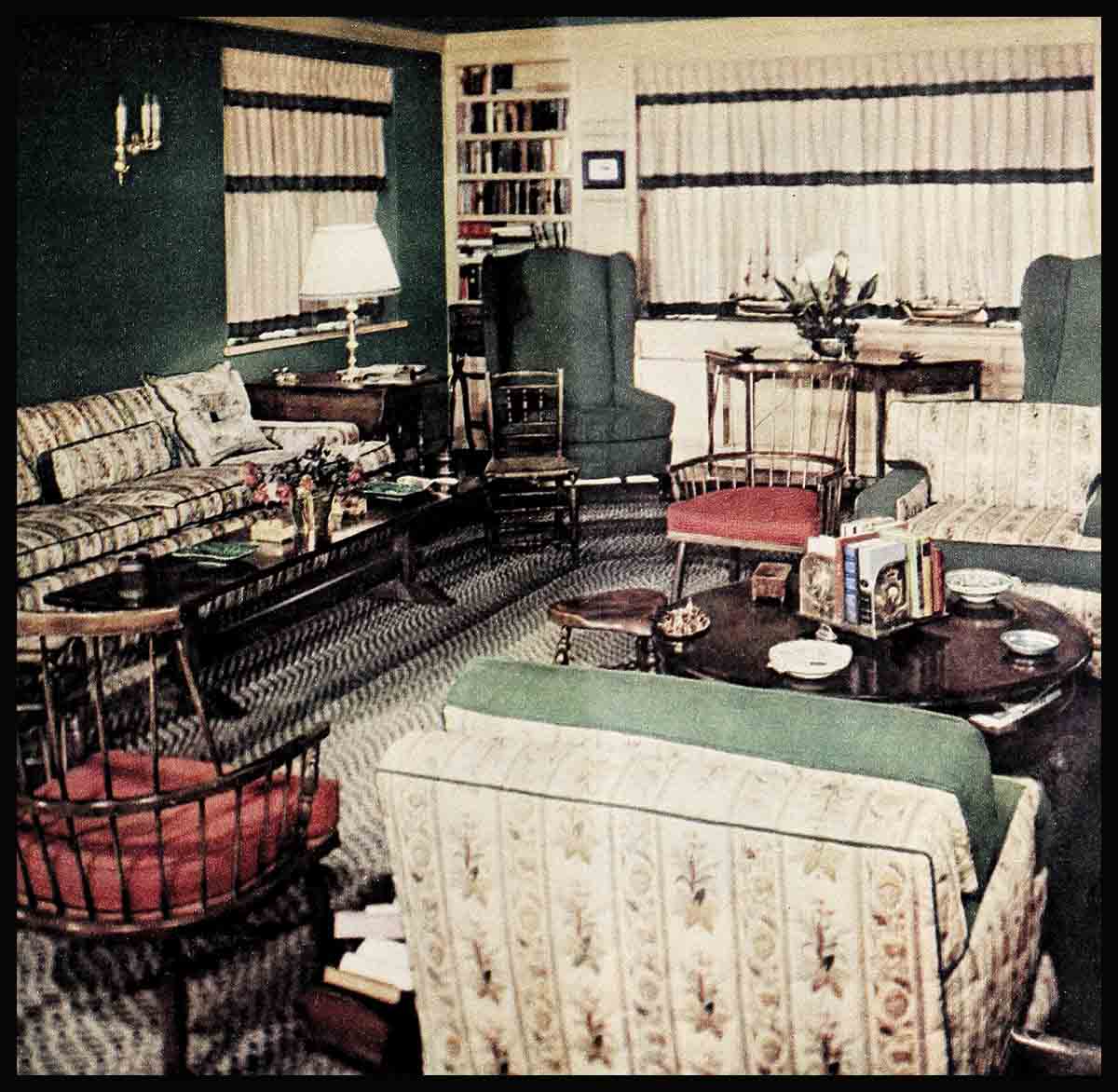
Welcome Home—Powell & Allyson
Too many houses give impression that all their owners really want is a bar with an attached three-car garage.
The warmly lived-in residence of June Allyson and Dick Powell is another story. Here, truly, is a dwelling intended for comfort and: happiness. Its charm shines from each and every room. It is solid without ever being stuffy, luxurious without being oppressively opulent and everything about it radiates contentment with the promise of more happy living to come. The Powells already have one small daughter. Dick’s two children by his former marriage visit him frequently. Besides, I’m told, they want to adopt three more youngsters. This is the sort of establishment that can hold them all, when and if.
For those of you who want to have the warm, friendly atmosphere of permanence and refinement in your home, here is a delightful example to copy.
Oh, I know what you are thinking, and you are thinking correctly. A small fortune has been spent at the Powells’. But you can copy their overall effect on a much smaller scale and still make it very effective.
The Powell antiques are genuine, whether they are hunt tables, Welsh dressers or pewter plates. Two of the lamps in their living room have bases of sterling silver. One of their. hunt tables is so priceless that it is a virtual museum piece. Their student lamps are masterpieces of their kind and Dick’s collection of ships’ models, scattered throughout the house, is not the sort you pick up for nickels and dimes.
Nevertheless, even on a budget, you can achieve many of their effects. There are so many clever points to this house: The way the Powells have planned their dining room to adapt itself to either large or small parties; the manner in which Dick’s bedroom adapts itself just as well to being an office; the rose-colored luxury, yet practicality of June’s bedroom; the fascinating use they have made of their furniture “leftovers.”
My point is this. Just as to a teen-ager, adults of thirty or sixty seem equally old, so to altogether too many people “antiques” mean only a piece of furniture that dates back to Queen Victoria.
Well, let me point out a thrift trick, which the Powells used, by which you can have modern charm and comfort in your furnishings without too much expense.
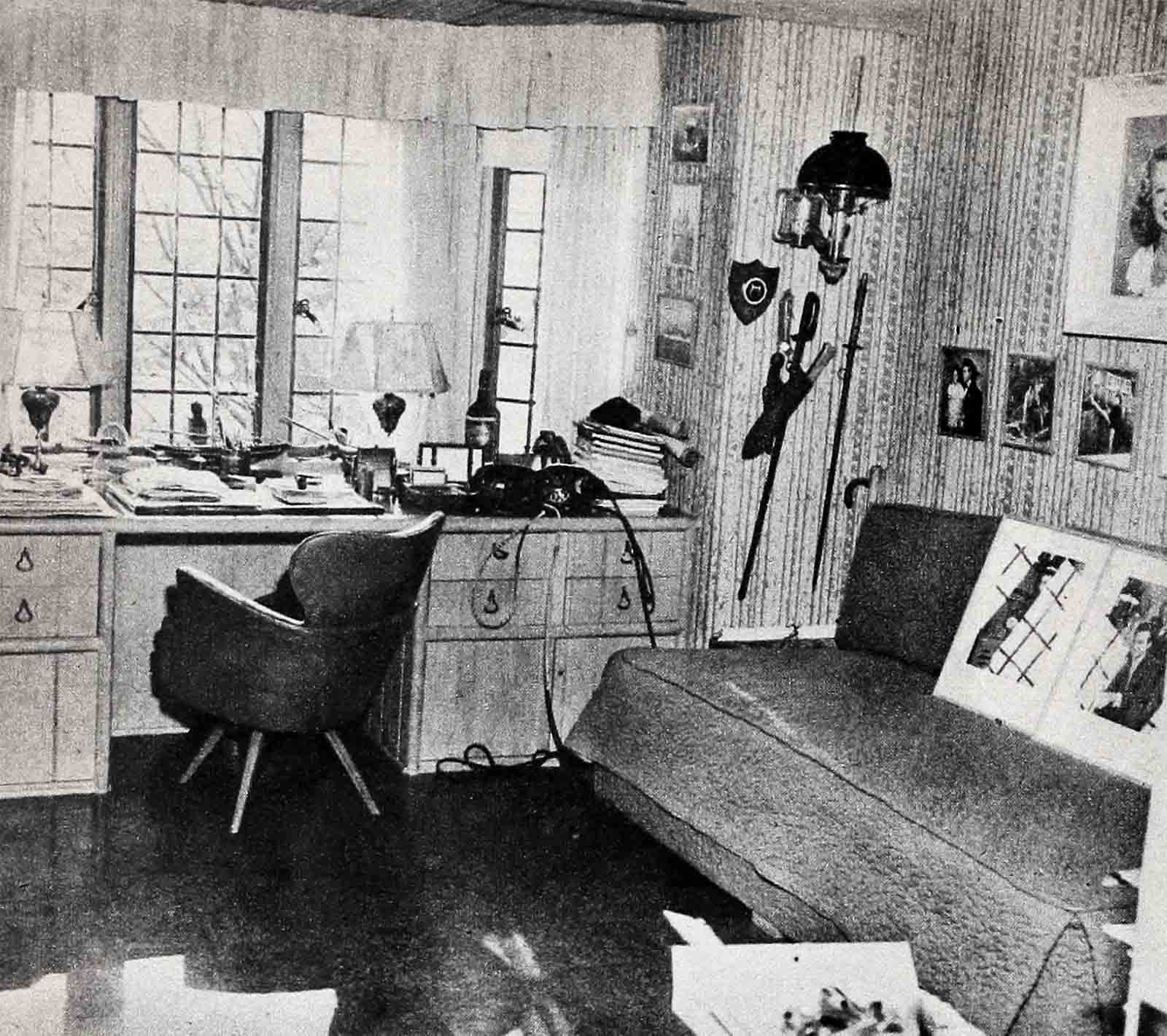
The long coffee table in their living room which sits in front of the quilted couch opposite the fireplace is a good example. When Dick found it at an antique shop it was nearly twice as high as it now appears and it had extension drop-leaves on either end. So he had it cut down. But he didn’t just have the tall legs that were left thrown away. Instead, he had those (there happened to be eight of them) topped with the extension drop-leaves and the result was the two lamp tables you see on either side of the fireplace. Clever?
Now this was a fine antique table, actually English Eighteenth Century. You can get yourself a much “younger” antique. It may be a table no more than twenty years old, languishing in an auction store. Yet, the wood and the cabinet work are infinitely superior to what you could get for the same small sum in new furniture. So, go look at it with an imaginative eye and see what you can do with it.
Another thing to copy in the Powell living room is the happy blending of today’s comfort with yesterday’s old woods and “conversation pieces.” The plaster walls are painted dark green to contrast with the wood-paneled walls at either end of the room. Beige cottage curtains banded in green are used in every room on the lower floor. This not only gives an air of serenity, but buying such a quantity of material, originally, is a boon to the budget.
The pink-red of the glazed chintz used for the long “entertaining” couch opposite the fireplace and for the two small couches before it, blends cheerily into the turkey red of the cushions on the antique chairs, and the dark green wing chairs, matching the wall color, give the wood-paneled ends of the room a fine color balance. Sharp color accents, too, are the brass lamps combined with the silver ones, their beige shades untrimmed save for a tiny touch of green.
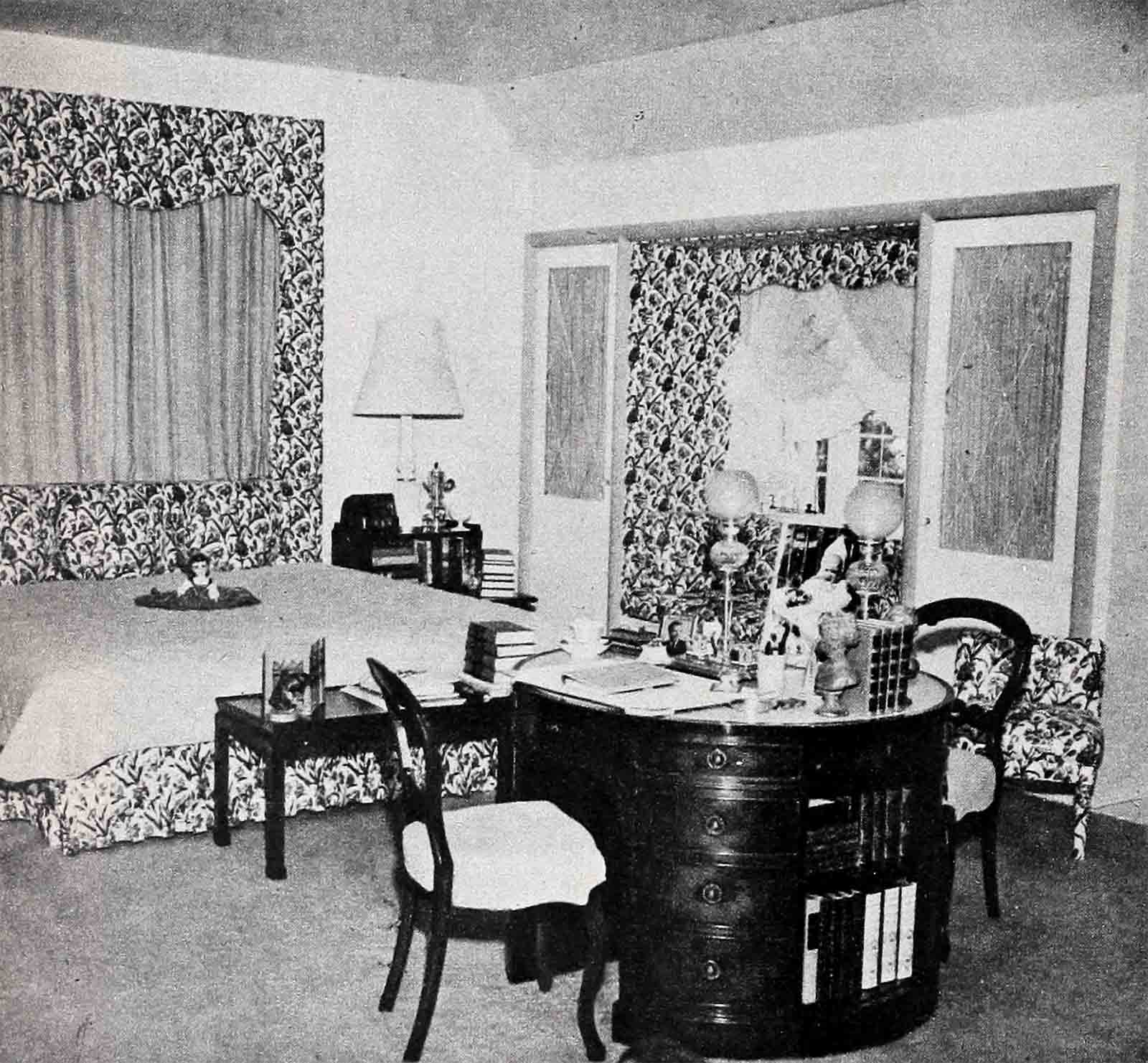
Look, too, at the manner in which the “occasional” chairs are grouped. They don’t impede traffic, yet they are adjacent to the coffee tables, which means a nice grouping for talk before and after dinner.
At the same time, the “before the fireplace” arrangement is so intimate that when the Powells are alone there will be none of that vacant feeling in the room that a more formal room this size might give. A room should be able to expand or contract, as company demands, without losing its essential character.
Just as the curtains are similar throughout all the lower floor, so too are the wall colorings and the wood trim. Going from the living room to the dining room, you pass through a dark green hallway, with a braided rug on the floor, similar to the one in the living room (more good antiques), and then you come into what June calls “Richard’s tavern.”
They have three round tables, rather than one huge square or rectangular affair. Each table easily accommodates four and can be expanded to six. They are pedestal-legged so that there is never “a leg in the way” where anyone sits. Here, again, you have antiques cut down, and if you can’t find a neglected round dining table, much too high, in some antique dealer’s in your town, you aren’t as good a shopper as I want you to be.
You, personally, may not have a dining room large enough to hold more than one table, or perhaps you do not entertain more than half-a-dozen people at a time for a sit-down dinner, but if you do on both scores, you’ll be very up-to-date on Hollywood style to serve in this fashion.
I highly approve of Dick’s bedroom-office. For a man who isn’t an executive, as Dick is, since he became his own producer, this desk in front of the windows could just as well be turned into the workbench of a hobby center. Here, as in the living room, you will find Dick’s fencing foils, his ship models, his airplane models. Yet nothing is cluttered. The cork-covered floor looks masculine. So, too, does the simple studio-couch bed.
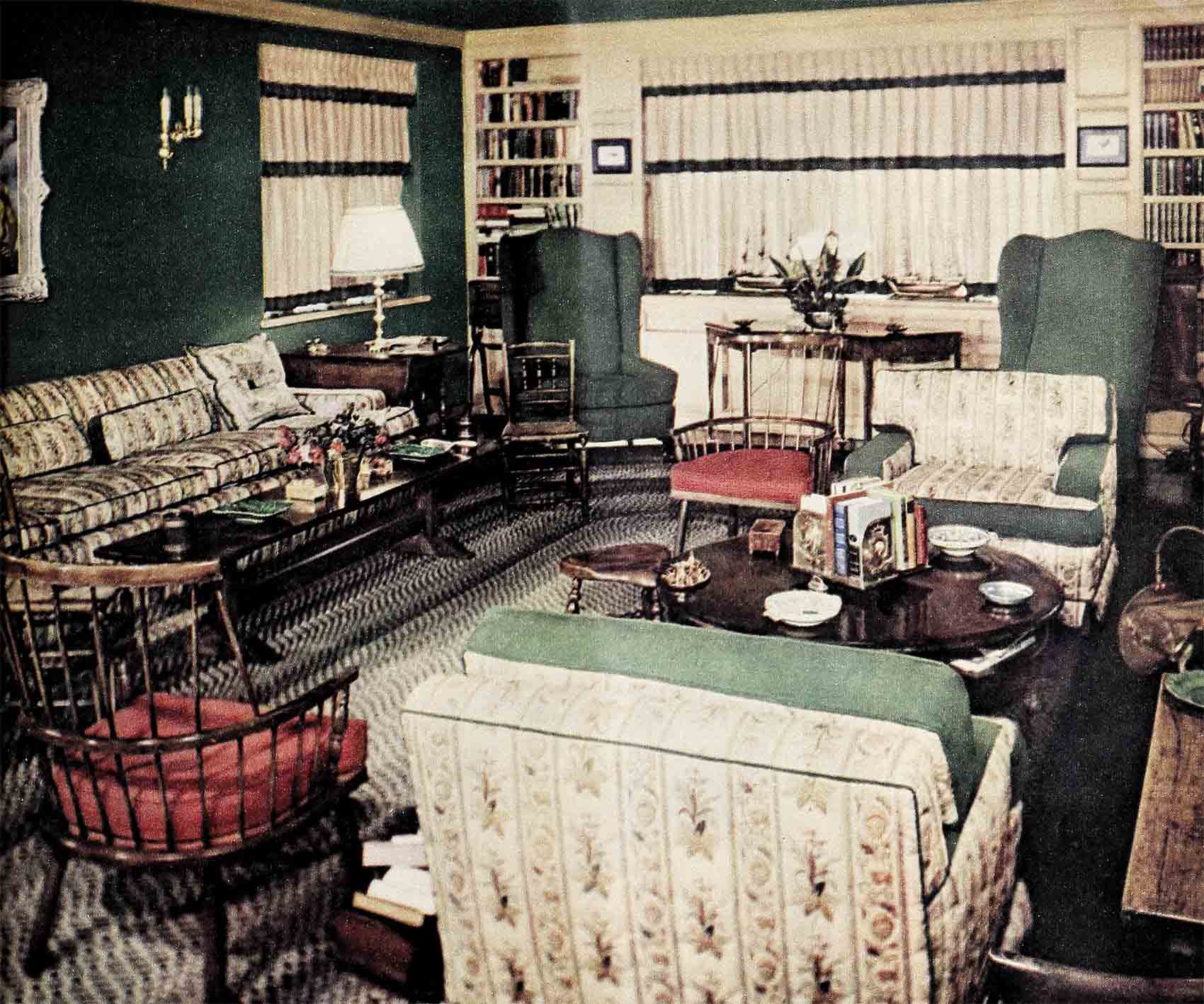
Step through the inner doorway, however, and June is bustin’ out all over. The room is done in a rosy pink, but it is the pink of the flowers of that name, or perhaps you call them carnations, and a lively pattern of them makes the headboard and the petticoat on June’s big, wide bed, and the “shadow-box” frame above it. The design is picked up again on the windowseat across from the bed, the window itself being gay with white organdy curtains, and it gets a further accent on one small slipper chair. There is rose-colored carpeting, baseboard to baseboard, and only the “step” tables beside the bed, on either side, and the fine, round antique desk, piled high with books and scripts, betray the news that the lady of this house is more than glamorous. I think a desk in a bedroom is more desirable for any woman who wants to run her house well, but in this particular household, with scripts to be studied, fan mail to be answered, it is the height of wisdom for both husband and wife to have a desk.
June’s room is truly a dream room, but the good things for you to copy are its neatness and easy maintenance. The top of her bedspread is quilted cotton and it can be laundered. Her clothes are neatly hidden behind the paneled doors, with their pink chiffon curtains. Actually, June has a mirrored dressing room, at the far end of her room. But all her closets are separate, hats here, shoes there, coats in a third, furs in the fourth. It must have cost quite a sum to put on all those doors and partitions but the saving of woman-hours must more than make up for it.
A good house doesn’t just happen any more than a good marriage does. It takes planning, eternal vigilance, a love of what it stands for, and lively imagination. Money helps, but if you have these other qualities, you can produce twice as much pleasure for yourself and loved ones as mere money without these qualities can.
THE END
—BY HANS DREIER
It is a quote. PHOTOPLAY MAGAZINE MAY 1950


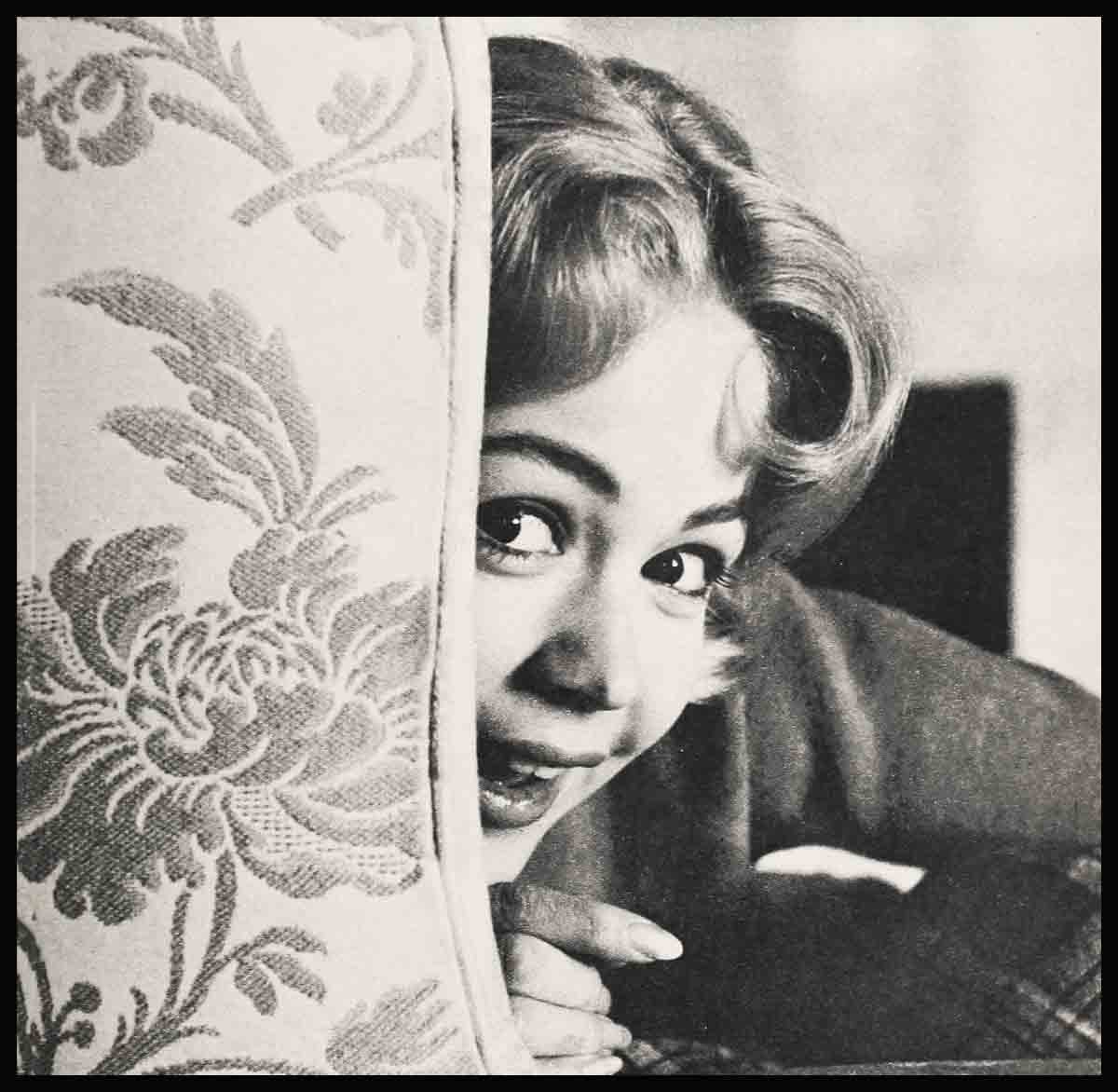
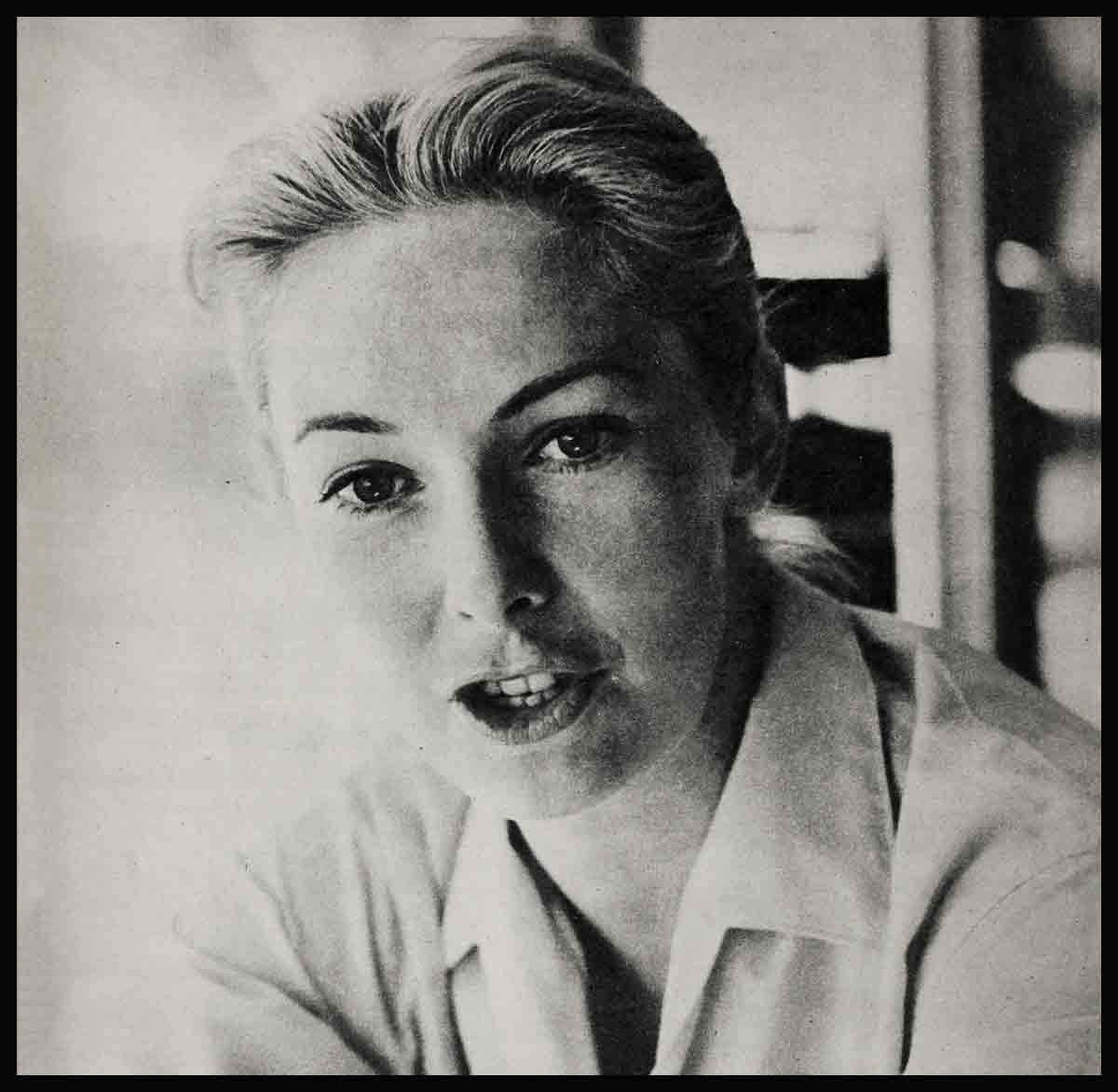

No Comments